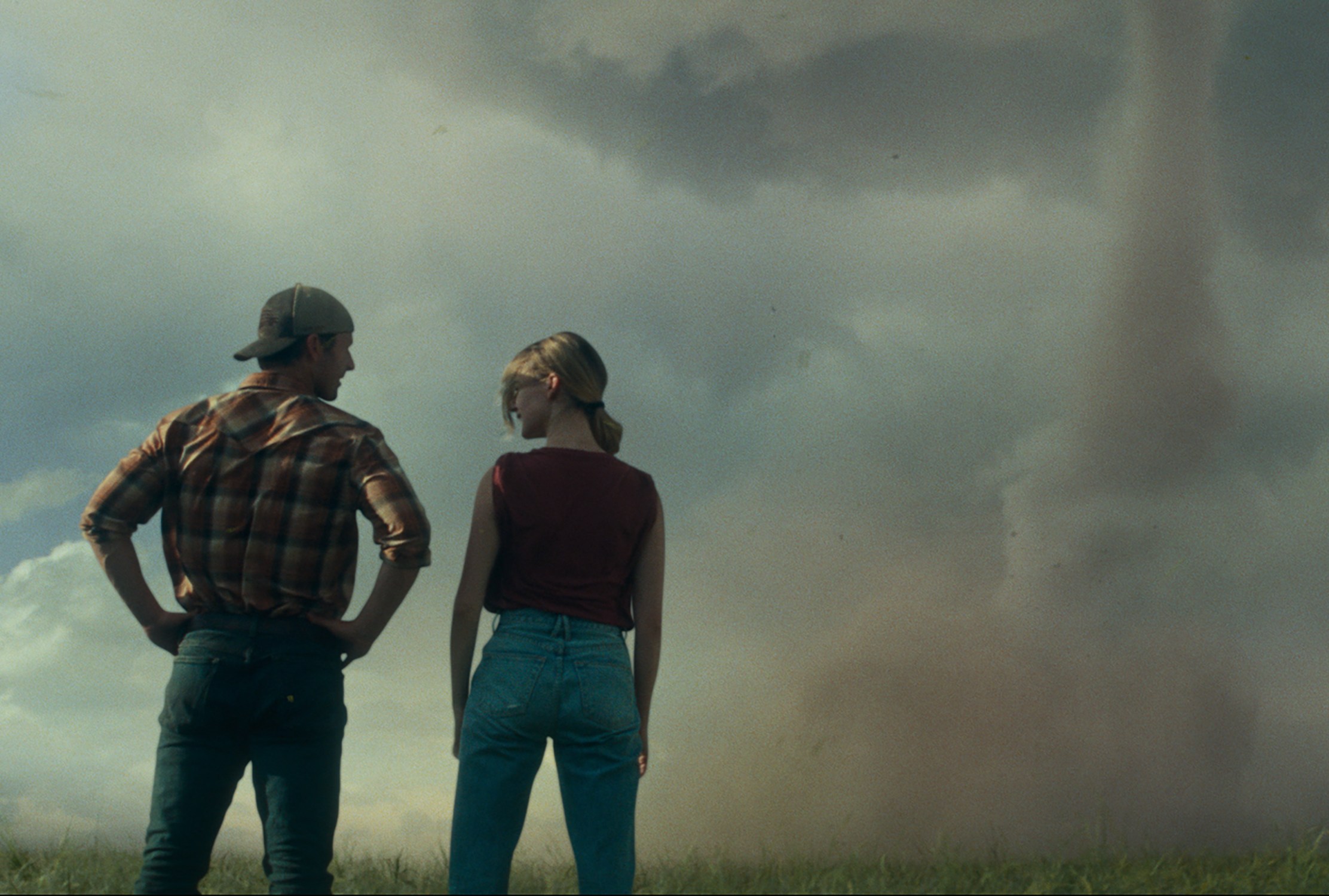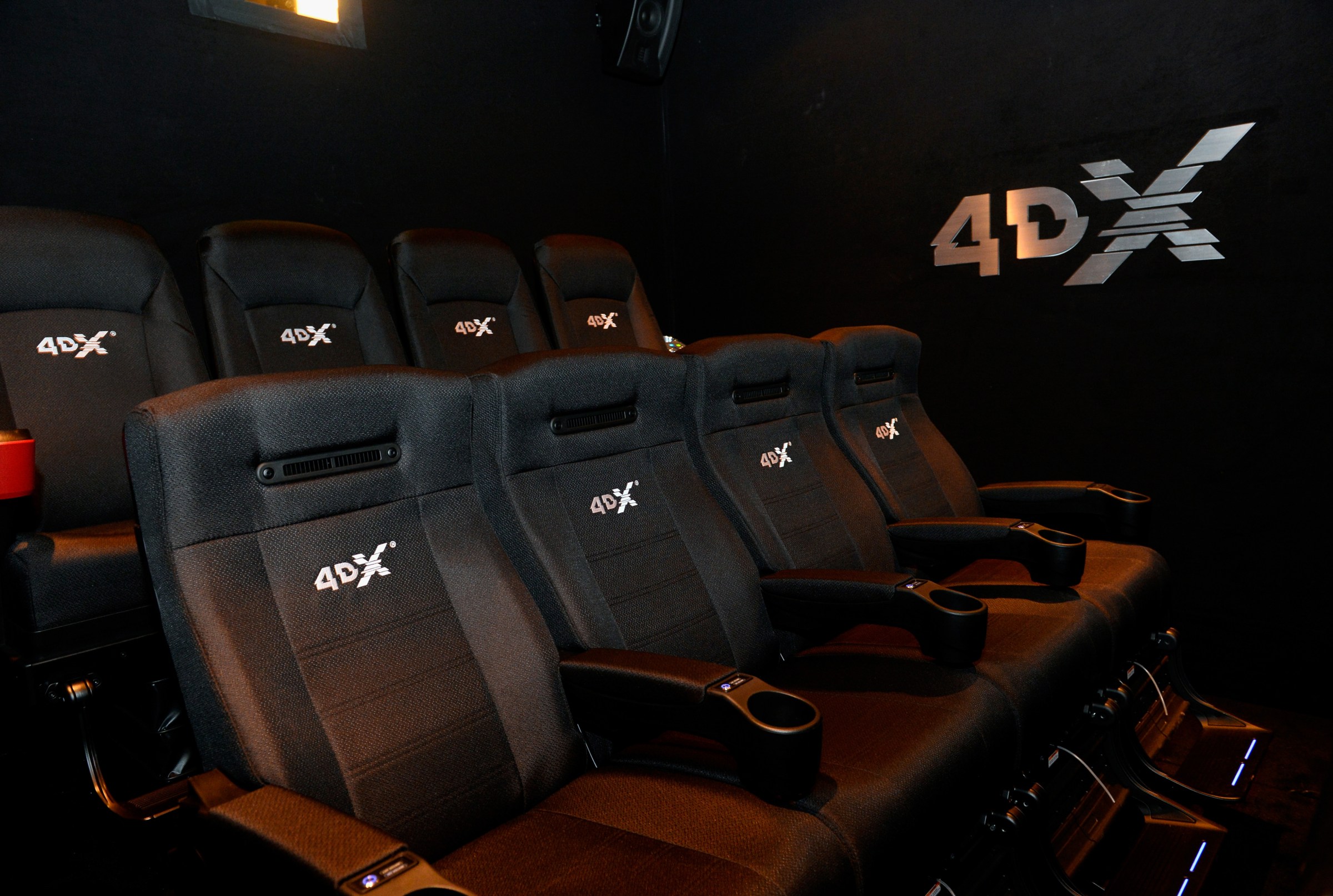I had no business enjoying Twisters as much as I did.
July 25, 2024:
I had no business enjoying Twisters as much as I did.
For one, I’m not a fan of disaster movies. Nor do I have a relationship to the original 1996 film Twister — although, it turns out you don’t need to know anything about the first movie to watch this stand-alone sequel. I didn’t walk out of Twisters thinking that it was particularly good. The performances by Daisy Edgar-Jones and (sorry) Glen Powell were mediocre. The dialogue was silly. The music cues were laughable. Every aspect of the film felt like it was focus-grouped, including the omission of a climactic kiss between the two “romantic” leads.
So how did I manage to leave Twisters elated, you might ask? I paid an extra $6 to see it in 4DX, an “immersive” theater experience that feels like the only way anyone should consume this ridiculous film.
For the uninitiated, 4DX is sort of like if you watched an entire action movie inside one of those virtual-reality space shuttles at an amusement park — only a lot more visceral. The experience at Regal Cinemas includes motion-enabled seats that jolt and rotate. In the case of Twisters, there are bursts of wind, trickles of rain, and fog. You’re also guaranteed a heightened communal experience. At my screening, several set pieces were followed by loud applause, including after a tragic scene where innocent characters die. By the end of the film, I had no idea whether everyone was responding to the events in the film or to the chaotic bodily experience we had all endured together.

Twisters has already done a lot of good advertising for the limited format. The film made $2.1 million in 4DX tickets during its opening weekend, and moviegoers can’t stop raving about the experience on social media. It’s certainly good advertising leading up to Deadpool & Wolverine, out this weekend, which can also be experienced for a limited time in 4DX.
4DX is just one of many movie formats that has made moviegoing more exciting but also a lot more confusing — and expensive. With streaming keeping more people at home, theater chains seem focused on selling premium experiences. However, are they enhancing the experience of moviegoing or complicating it with all these different options? The answer might be both.
If you’ve bought a movie ticket recently, you’ve probably noticed the increasing number of premium formats available. The list of options for Twisters in the New York City area is comically long and utterly perplexing. In addition to 4DX, you can also pay to see the film in IMAX, Laser at AMC, IMAX with Laser at AMC, Dolby Cinema at AMC, Prime at AMC, RPX, and Screen X. You could also see it in the standard digital 2D format, the cheapest of all these options. However, when listed alongside all these formats that sound innately fancy — even if you don’t have the vaguest idea what they mean — a standard screening might seem less ideal.

So what do these formats entail exactly? For the most part, they magnify how you see and hear a movie. IMAX, which is shot on IMAX cameras using 70mm film, is probably the best-known. A more exclusive format like RPX is still a bit more foreign. RPX (Regal Premium Experience) is Regal Cinema’s in-house larger-screen format, which features an updated sound system. It’s not as high-quality as IMAX, nor is it as premium as Dolby Digital Cinema, which is located in AMC theaters. Dolby Cinema uses dual 4K laser projectors, which has four times more resolution than a standard theater projector. These theaters are also equipped with Dolby Atmos, an ultra-surround sound system that includes speakers in the ceilings and transducers in the seats.
Laser at AMC uses laser projectors in place of digital ones, while Laser with IMAX simply combines their respective technologies. PRIME at AMC boasts Cinionic laser projectors, better acoustics, and “sublime seating.” (On paper, it doesn’t seem that different from Laser.) Lastly, Screen X is a more immersive experience, using a 270-degree panoramic presentation system. Like 4DX, it’s an export from South Korea. It’s equally gimmicky, expanding images along the walls during key scenes to make audiences feel like they’re inside a room or on a battlefield.
As confusing and even unnecessary as they may be, the advent of these new, snazzy formats makes sense in a time when people need some extra motivation to leave their couches to go sit in a theater. With the popularity of streaming and with films going quickly from theaters to VOD, it seems as though theater chains have to promote themselves differently — not just with their film offerings but with a unique experience that can’t be emulated at home.
The strategy of selling a movie in a special format seemed to work for Oppenheimer. While IMAX is hardly a new format, Christopher Nolan’s urging of the public to see Oppenheimer on the biggest screen possible, whether in IMAX 70mm or non-IMAX 70mm, seemed largely related to the overall success of the film. Not only did IMAX theaters sell out rapidly, particularly in New York City, but the level of demand prompted an extended IMAX run. It also reminded audiences how much the size of their screens and quality of a picture can highlight good filmmaking.
4DX, however, is an entirely different beast. Its goal is to entertain the audience, not elevate art. While it could grow into a huge cash cow for theater chains, it’s hard to know if it’s ultimately what’s best for cinema as a whole.
Twisters might do for 4DX what Oppenheimer did for IMAX. Critics and average moviegoers alike are spreading the gospel of the format online and selling out showings. This is certainly the most PR 4DX screenings have gotten since they arrived in America in 2014. But is this something we could see the film industry push back on?
4DX is designed to heighten moviegoers’ senses and put them inside of the film. But there’s an argument to be made that all the movement and effects distract from the story being told onscreen. I spent most of my Twisters viewing waiting for action sequences so that I could be jolted in my seat and giggle with my friends. Additionally, it was hard to pay much attention to the direction of the film, the dialogue, or the science behind the storm-chasing while being thrashed around.
In the case of a silly movie about tornadoes, I didn’t feel like I was robbed. My friends and I agreed we would’ve been bored out of our minds if we had watched Twisters in any other format. Still, we walked away with a reaction that wasn’t truly genuine. Nor did we respond properly to the tone the film was trying to create in certain moments. For instance, a devastating opening sequence that sets up a post-traumatic arc for Edgar-Jones’s character, Kate, was met with excitement and laughter. Who knows whether being more locked into this moment would’ve made the stakes of the film feel more real. It’s hard to argue that you need to respect the gravitas of a film like Twisters, but for a higher-quality movie with good performances, one can imagine some seriousness being lost.
It has yet to be seen if 4DX will be an actual “threat” to cinema. Right now, there are only 50 4DX theaters in the United States. Plus, the higher ticket price, an average of $8 more than a standard ticket, may not be worth it to certain moviegoers.
Still, it’s not hard to see this becoming the next great film-viewing debate. Given the panic filmmakers have already displayed over young people watching movies on their iPhones, one can imagine the sort of uproar in Hollywood if 4DX became a bigger phenomenon. For now, though, it seems Americans haven’t been more excited about a new theater technology since before the pandemic. If film executives continue to feed us horrible IP, we might as well be allowed to rock out in our seats.